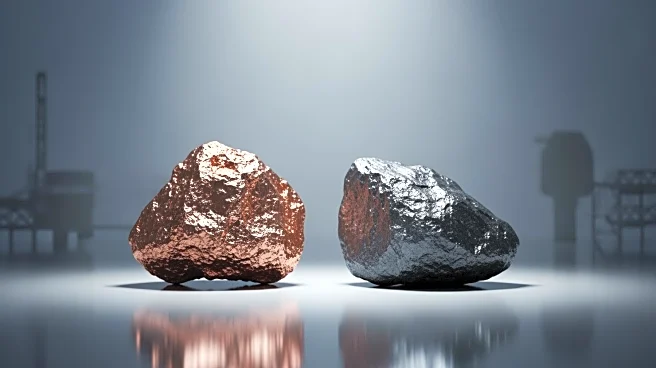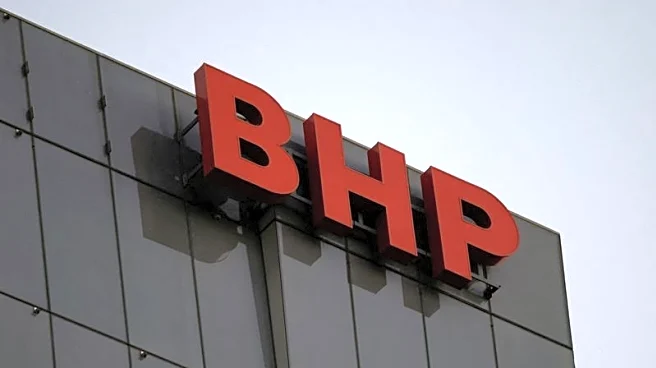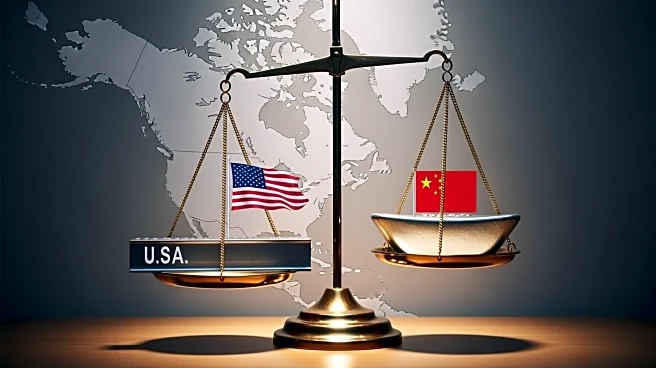What's Happening?
BHP Group has expressed confidence in the resilience of global iron ore demand, even as it acknowledges a slowdown in China's economic growth. The company's first-quarter iron ore output slightly missed
expectations due to maintenance activities at Port Hedland. BHP reported iron ore production of 70.2 million metric tonnes from its Western Australia operations for the quarter ending September 30, falling short of the 71.55 million metric tonnes anticipated by analysts. Despite this, sales increased by 5% due to higher-value lump sales. The completion of a major rebuild of Car Dumper 3 at Port Hedland, which was finished ahead of schedule, contributed to the reduced volumes. BHP has maintained its fiscal 2026 output forecast for Western Australia iron ore between 284 million and 296 million metric tonnes.
Why It's Important?
The developments at BHP are significant as they highlight the ongoing challenges and opportunities within the global iron ore market. BHP's confidence in demand resilience, despite China's economic slowdown, suggests a stable outlook for the commodity, which is crucial for the steel industry. The company's ability to maintain its production forecast indicates operational stability and strategic foresight. Additionally, BHP's focus on copper, driven by disruptions at competitors' mines, underscores the metal's growing importance in the transition to renewable energy. This shift could have long-term implications for the mining industry and global supply chains, as copper is essential for green technologies.
What's Next?
BHP's continued investment in its operations, such as the Jansen potash project in Canada, reflects its strategy to diversify and strengthen its portfolio. The completion of Stage 1 of the project by 2027 and progress on Stage 2 indicate a commitment to expanding its resource base. Stakeholders will be watching how BHP navigates the challenges posed by China's economic conditions and the global demand for iron ore and copper. The company's performance in the coming quarters will be critical in assessing its ability to adapt to market dynamics and capitalize on emerging opportunities in the green energy sector.












